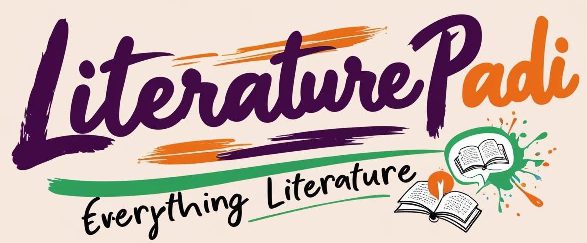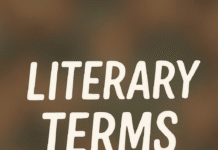📢 Follow our WhatsApp Channel for the latest literary updates!
A ballad is a short narrative poem typically adapted for singing. It tells a story in a simple and dramatic manner, often centered on themes like love, tragedy, heroism, or humour. Ballads are usually composed in quatrains (four-line stanzas) with alternate rhyming patterns such as abab, abcb, or xaxa.
Crucially, the ballad is impersonal—the poet does not express personal emotions or insert themselves into the narrative. Instead, the focus remains on the characters and the story being told.
Types of Ballads
Ballads can be grouped into two main types. They are folk ballads and art ballads.
1. Folk Ballads (Traditional or Popular Ballads)
Folk ballads are also known as traditional or popular ballads. They are anonymous and passed down orally through generations.
The original composers are unknown, though they may have been individual poets or community efforts.
The style is impersonal, with no first-person perspective unless spoken by a character.
Examples include:
- Sir Patrick Spens
- Edward
- Lord Randal
- The Daemon Lover
- The Twa Corbies
Folk ballads are valuable sources of cultural memory, often reflecting the beliefs, superstitions, and social issues of the people.
2. Art Ballads (Literary Ballads)
Art ballads, also known as literary ballads, are written by known poets and often imitate or adapt folk ballad traditions.
Unlike folk ballads, the literary ballad may feature more elaborate imagery and personal style.
Examples include:
- La Belle Dame sans Merci by John Keats
- The Rime of the Ancient Mariner by Samuel Taylor Coleridge
- A Red, Red Rose by Robert Burns
Features of Ballads
Anonymity: Most traditional or folk ballads are of unknown authorship. They were passed down orally through generations, often by singers or storytellers who modified them as they went. The lack of a known author reflects the communal nature of folk culture. The ballad becomes the property of the people rather than of an individual.
Impersonality: Ballads typically avoid personal commentary or emotional reflection by the narrator. The storyteller maintains an objective stance, allowing the events to speak for themselves. This impersonal tone helps maintain the universality of the themes and characters.
Simple Repetition: Ballads often use repetition to emphasize key points or emotions. Phrases, lines, or even entire stanzas are repeated to create rhythm and help the audience remember the story. This technique also enhances oral performance, making the song easier to follow and more impactful.
Incremental Repetition: A special type of repetition where a line or stanza is repeated with a slight change each time. This technique builds suspense and moves the narrative forward. For example, a stanza might repeat with one new piece of information that advances the plot or increases tension.
Focus on a Single Episode: Ballads tend to be concise, telling a single, unified story or dramatic incident. There is little to no background information or digression. This tight focus intensifies the emotional impact and ensures clarity in oral transmission.
Minimal Figurative Language: The language of ballads is typically straightforward and unadorned. Similes, metaphors, and other figures of speech are used sparingly. The clarity of expression ensures the story is easily understood, especially when sung or recited aloud.
Dramatic Dialogue: Characters often speak directly in ballads, with the story unfolding through their conversations. This dialogue-driven style adds immediacy and engages the listener, sometimes without any narrative framing to introduce who is speaking.
Use of Refrains: Repeated lines or phrases, known as refrains, often appear at the end of stanzas. These serve both musical and structural functions, enhancing rhythm, reinforcing themes, and aiding memory. For example, a line like “Oh the wind and the rain” might recur throughout a ballad.
Stock Epithets and Concrete Diction: Ballads often use fixed descriptive phrases (stock epithets) like “milk-white steed” or “black-hearted knight” for familiarity and rhythm. They also rely on concrete diction—vivid, sensory language that paints clear pictures, making the story more tangible for listeners.
Quatrain Stanzas: The standard stanza form in ballads is a quatrain—four lines per stanza. The common rhyme scheme is ABCB or sometimes ABAB, with alternating lines of iambic tetrameter and iambic trimeter. This structured form contributes to the musical quality of ballads.
Rhyme Patterns in Ballads
Ballads typically follow these rhyme patterns:
- abab – both alternating rhymes
- abcb – second and fourth lines rhyme
- xaxa – only second and fourth lines rhyme, first and third may not rhyme at all
ABAB
In this pattern, the first and third lines rhyme with each other, and the second and fourth lines rhyme with each other.
Example:
The wind did howl across the moor (A)
The moon was cold and bright (B)
The trees all creaked, a ghostly roar (A)
It chilled my bones with fright (B)
This pattern creates a steady and balanced rhythm, often giving the stanza a more formal or lyrical tone. It’s less common in traditional folk ballads but appears in more literary adaptations.
ABCB
This is the most traditional and widely used rhyme scheme in folk ballads. Here, only the second and fourth lines rhyme, while the first and third lines do not.
Example:
She walked along the silent glen (A)
Her footsteps soft on stone (B)
She sang a song of long-lost men (C)
And wandered off alone (B)
The unrhymed first and third lines give a sense of naturalness and simplicity, while the rhymed second and fourth lines provide a satisfying sense of closure. This structure suits oral tradition and allows for easier improvisation.
XAXA
In this variation, sometimes called a partial rhyme scheme, the first and third lines may or may not rhyme, but the second and fourth lines do rhyme consistently. The “X” represents unrhymed lines.
Example:
The river flowed beneath the sky (X)
Its current swift and deep (A)
A boat went drifting slowly by (X)
As night began to creep (A)
This form offers flexibility and a more conversational tone, while still maintaining a predictable end-rhyme to anchor the stanza. It retains musicality without strict uniformity.
These rhyme schemes are not just decorative; they aid with memorisation and performance of ballads.
Example (Folk Ballad: Edward)
Why does your brand sae drop wi’ blude, Edward, Edward? Why does your brand sae drop wi’ blude, And why sae sad gang ye, O? O I hae kill’d my hawk sae gude, Mither, Mither; O I hae kill’d my hawk sae gude, And I had nae mair but he, O.
Example (Literary Ballad: La Belle Dame sans Merci by John Keats)
O what can ail thee, knight-at-arms,
Alone and palely loitering?
The sedge has withered from the lake,
And no birds sing.
Sub-Categories of Ballads
Ballads can be further classified into thematic categories such as:
- Historical Ballads
- Love Ballads
- Humorous Ballads
- Ballads of Domestic Tragedy
- Ballads of the Border
- Epic-derived Ballads
These classifications help scholars and readers better appreciate the diversity within the ballad form.
Why Study Ballads?
Understanding ballads allows us to appreciate early forms of poetic expression. Ballads are among the earliest forms of poetry, often simple in structure yet rich in emotional depth. They reveal how people used rhythm, rhyme, and repetition to craft stories that resonated across generations. By studying them, we understand the roots of poetic techniques still used today.
The study of ballads allows us to explore the oral tradition and communal storytelling. Most traditional ballads were not originally written down. They were sung or recited aloud, passed from one person to another in communal settings like markets, taverns, and homes.
It allows us to recognise the literary evolution from oral to written forms. As literacy spread, many ballads transitioned from being performed orally to being recorded in print. This shift illustrates the broader evolution of literature—from fluid, changeable performances to fixed, written texts. Studying ballads helps us trace how storytelling adapted to new mediums over time.
Finally, understanding ballads allows us to gain insights into cultural values and historical contexts. Ballads often reflect the everyday lives, beliefs, and struggles of the people who created them. Themes like love, betrayal, heroism, death, and supernatural events provide glimpses into the moral values and societal norms of past eras. They also document historical events and folk legends in a way that official records may not. In essence, studying ballads is like listening to the voice of the past—rhythmic, raw, and deeply human.
Join Our Social Media Channels:
- WhatsApp: Literature PADI
- Telegram: Literature PADI
- YouTube: @literaturepadi
- Facebook: Literature PADI










